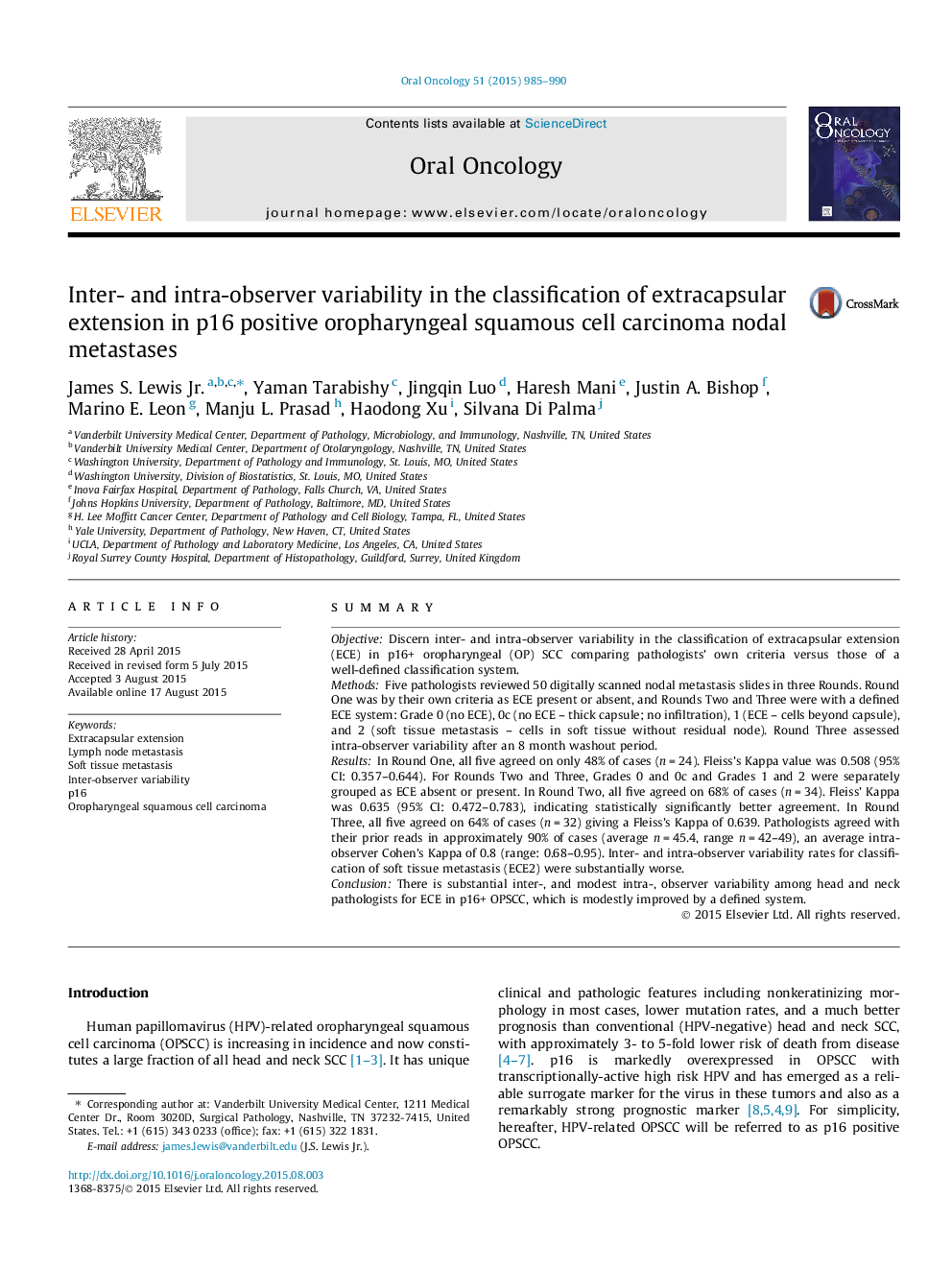| Article ID | Journal | Published Year | Pages | File Type |
|---|---|---|---|---|
| 3163922 | Oral Oncology | 2015 | 6 Pages |
SummaryObjectiveDiscern inter- and intra-observer variability in the classification of extracapsular extension (ECE) in p16+ oropharyngeal (OP) SCC comparing pathologists’ own criteria versus those of a well-defined classification system.MethodsFive pathologists reviewed 50 digitally scanned nodal metastasis slides in three Rounds. Round One was by their own criteria as ECE present or absent, and Rounds Two and Three were with a defined ECE system: Grade 0 (no ECE), 0c (no ECE – thick capsule; no infiltration), 1 (ECE – cells beyond capsule), and 2 (soft tissue metastasis – cells in soft tissue without residual node). Round Three assessed intra-observer variability after an 8 month washout period.ResultsIn Round One, all five agreed on only 48% of cases (n = 24). Fleiss’s Kappa value was 0.508 (95% CI: 0.357–0.644). For Rounds Two and Three, Grades 0 and 0c and Grades 1 and 2 were separately grouped as ECE absent or present. In Round Two, all five agreed on 68% of cases (n = 34). Fleiss’ Kappa was 0.635 (95% CI: 0.472–0.783), indicating statistically significantly better agreement. In Round Three, all five agreed on 64% of cases (n = 32) giving a Fleiss’s Kappa of 0.639. Pathologists agreed with their prior reads in approximately 90% of cases (average n = 45.4, range n = 42–49), an average intra-observer Cohen’s Kappa of 0.8 (range: 0.68–0.95). Inter- and intra-observer variability rates for classification of soft tissue metastasis (ECE2) were substantially worse.ConclusionThere is substantial inter-, and modest intra-, observer variability among head and neck pathologists for ECE in p16+ OPSCC, which is modestly improved by a defined system.
•Inter-observer variability for ECE in p16+ oropharynx cancer is substantial.•Pathologists agree significantly better with a well-defined classification system.•Agreement on soft tissue metastasis is significantly worse than for simple ECE.•Pathologists, after a washout period, generally agreed with themselves (∼90%)•The results, considered for each individual patient, show unacceptable variation.
